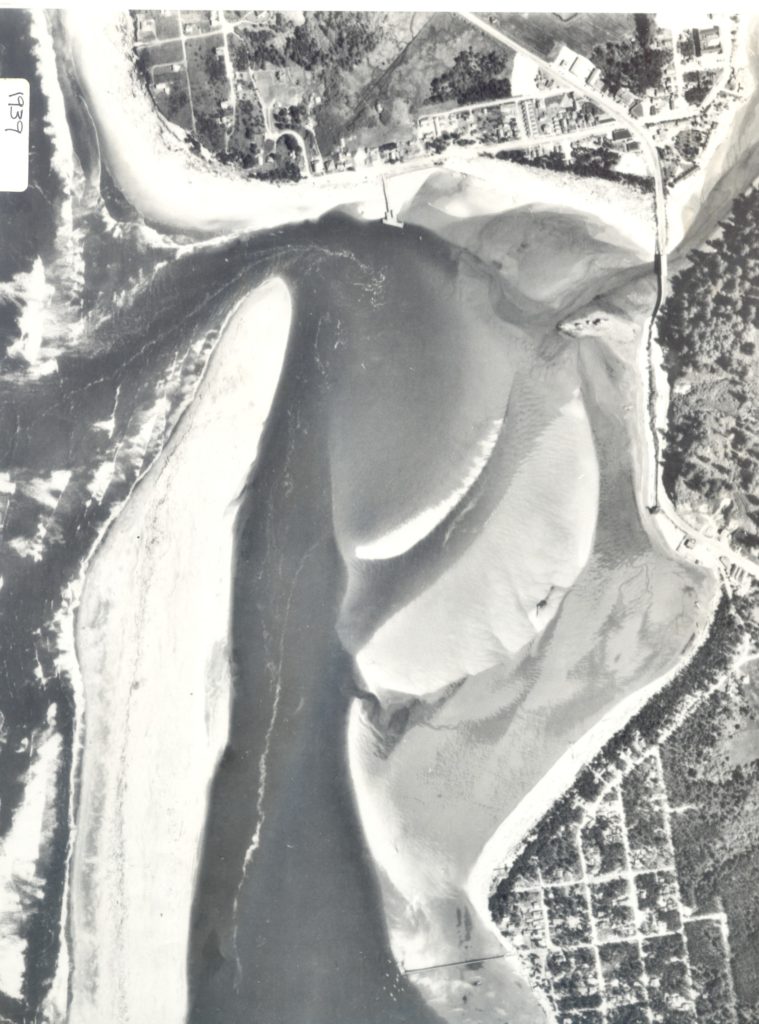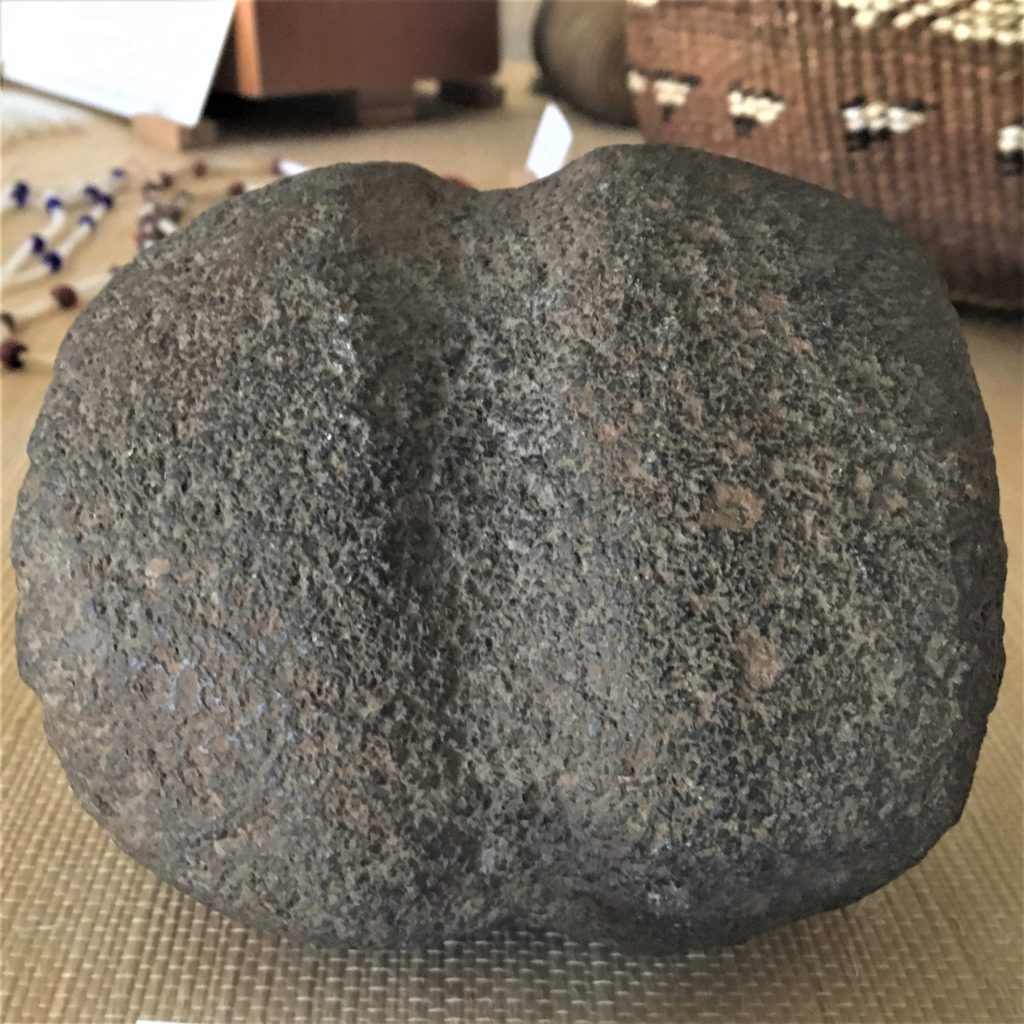
This grooved sinker stone (also known as a banded stone net weight) is our best example of a Native American fishing sinker stone and it tells the story of gill net fishing in our rivers and streams. Although this sinker stone was found on Sauvies Island near Portland, it is the same type that was used by generations and generations of Native American fishermen on the Salmon and Siletz Rivers here in the area we now call North Lincoln County.
The stone is about the size of a softball and was used to hold down a gill net that was strung across a river. Floats were attached to the top of the net to hold it up. The image below, from “Indian Fishing,” by Hilary Stewart, shows how these gill nets were stung.
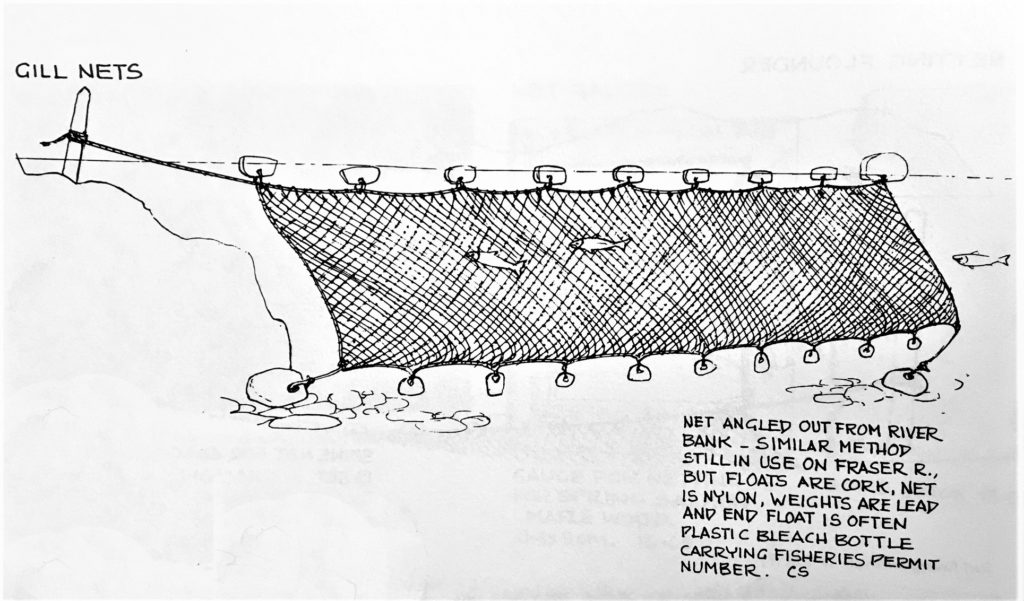
The fish would swim into the net and get stuck. When they would try and reverse out of the net, their gills would get caught, hence the name “gill net.” This method was so effective that it is still used to this day using modern material such as plastic and lead, as you can see by the caption of the above photo.
The purpose of the groove in the sinker stone is so a rope could be easily fastened to the stone, as seen in the illustration below (from “Indian Fishing,” by Hilary Stewart):

According to “Tillamook Indians of the Oregon Coast,” by John Sauter and Bruce Johnson, “Gill nets were usually about fifty feet long and were strung across good fishing spots. The top of the net was attached to floats, while net weights were tied to the bottom to hold the net straight in the water. Net weights were made of stone and were either ball shaped and banded with a pecked groove, or disk shaped and perforated with a drilling stone.” See the figures that accompanies this information below that show the perforated stone weights as well:
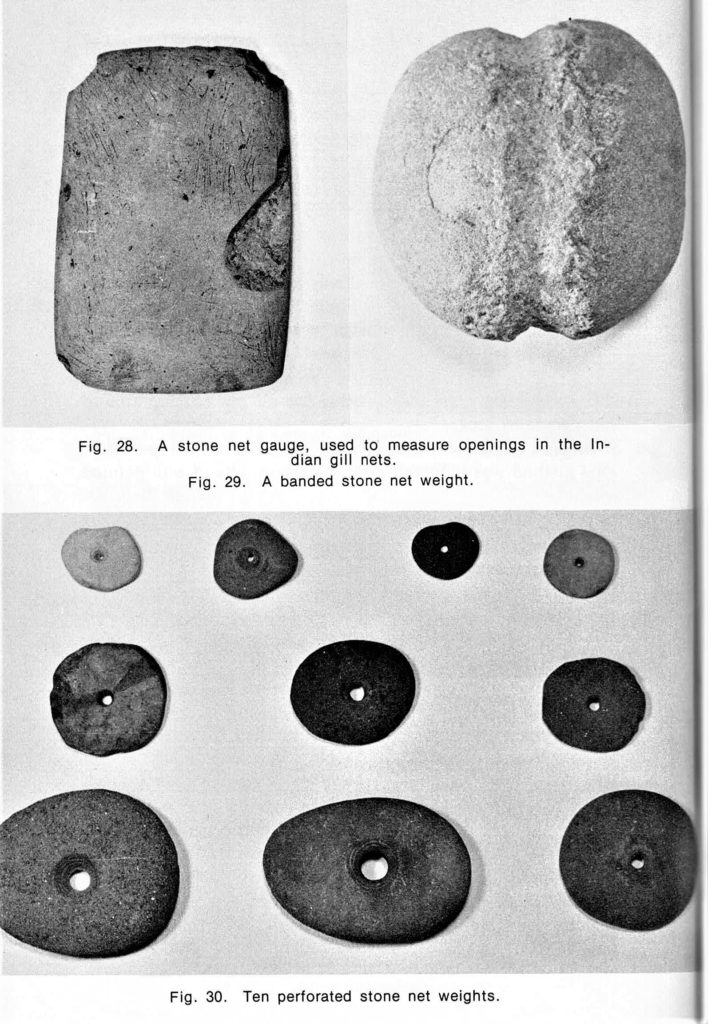
When we at the museum think of fishing on the Salmon River, we think of Jane and John Baxter. Jane, born in 1862, and John, born in 1858, were Siletz Tribe members and land allotment holders along the Salmon River (later the location of Pixieland, now a Forest Service protected wetland). Below is a photo of John (second from left) and Jane (third from left) with their catch on the Salmon River. Also in the photo are Mary and George Cutler (far right), founders of Cutler City. Despite all of the oppression the Baxter’s endured during their lives, they were known as kind and helpful to the white settlers.
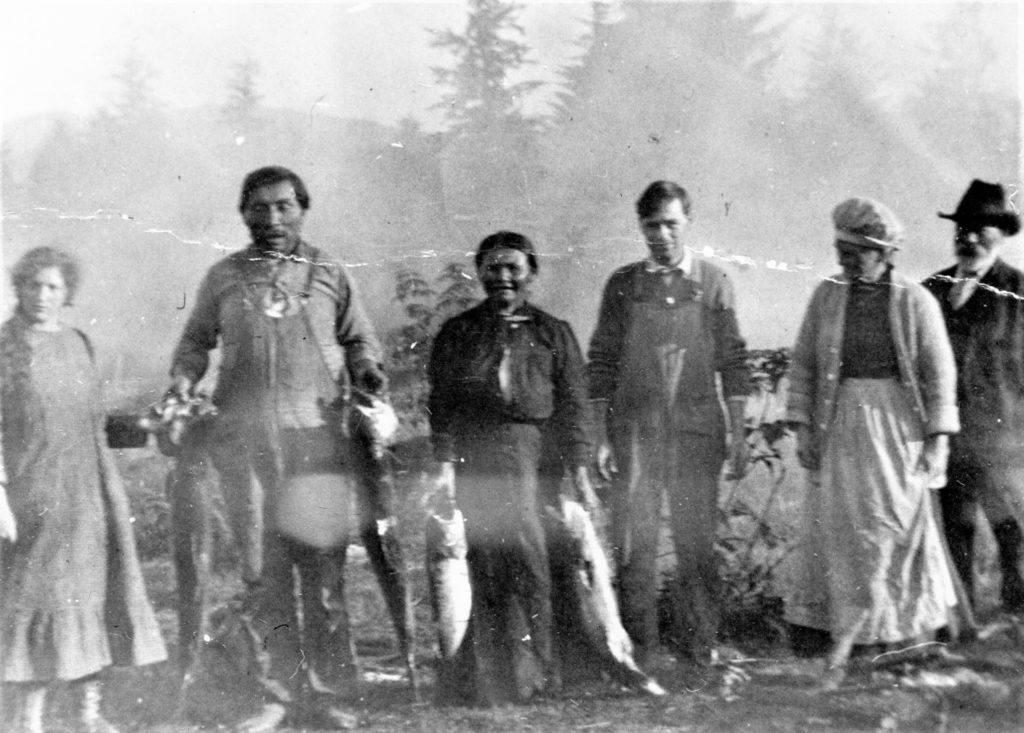
John Baxter was blind but could manage a boat and fish as well as anyone who could see. Jane was a remarkable woman, well liked by everyone.
“In Jimmy Gentry’s youth, the Indians on the river kept to themselves, but he would see Jane Baxter wading for flounder, fishing with her spear or walking along carrying a gunny sack on her back. Her spear was a pole with a nail or something sharp driven into the end. At low tide, spear between her toes, she stepped on flounder covered up in the mud, and speared them. With the fish impaled on the spear, Jane bent down, picked it up, and put it in her sack. Jane’s former husband – a Baxter – was blind. She later remarried – this time to a Mexican man.” -Jimmy Gentry interviewed for the Pioneer History of North Lincoln County, Volume 2.
This grooved sinker stone tells the story of a thriving Native American fishing community and specifically of the use of gill nets in streams and rivers. We are happy to tell the story of the people that lived here before white settlers through the artifacts left behind. Native American Tribes in the Pacific Northwest continue to practice their traditional sustainable fishing practices and we can all learn from their cohesive existence with nature.
For further reading, click the aerial photo of the Siletz Bay (1939) below to see an article by David G. Lewis, PhD called Indian Fishing Rights on the Grand Ronde-Siletz Indian Agency.
